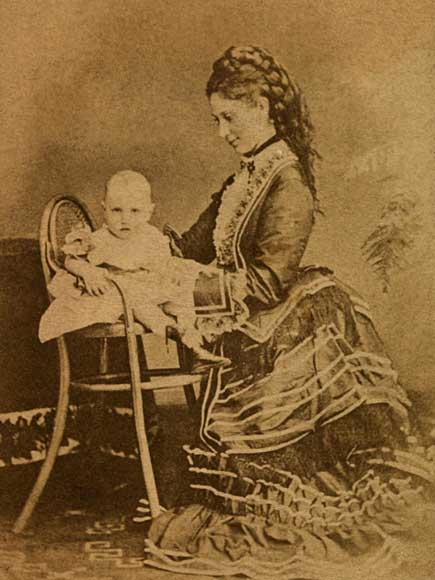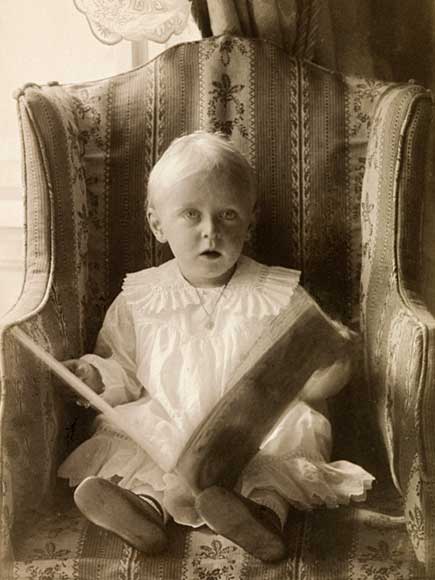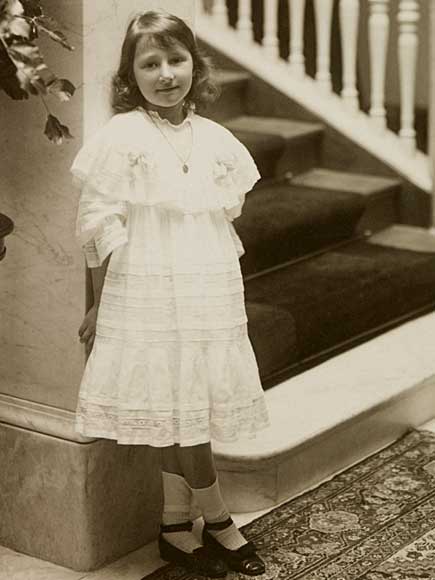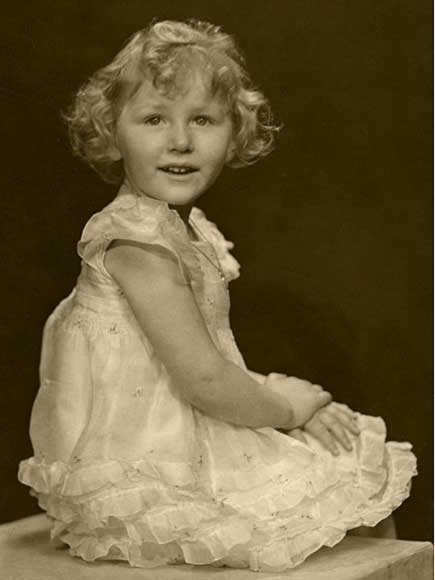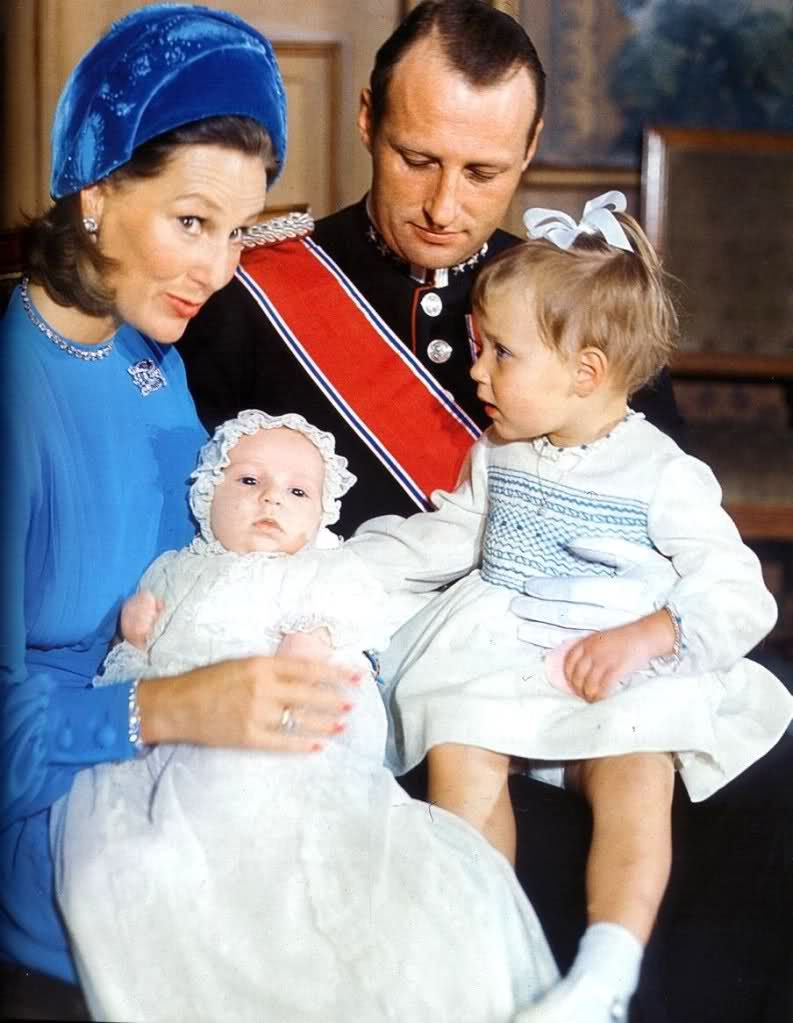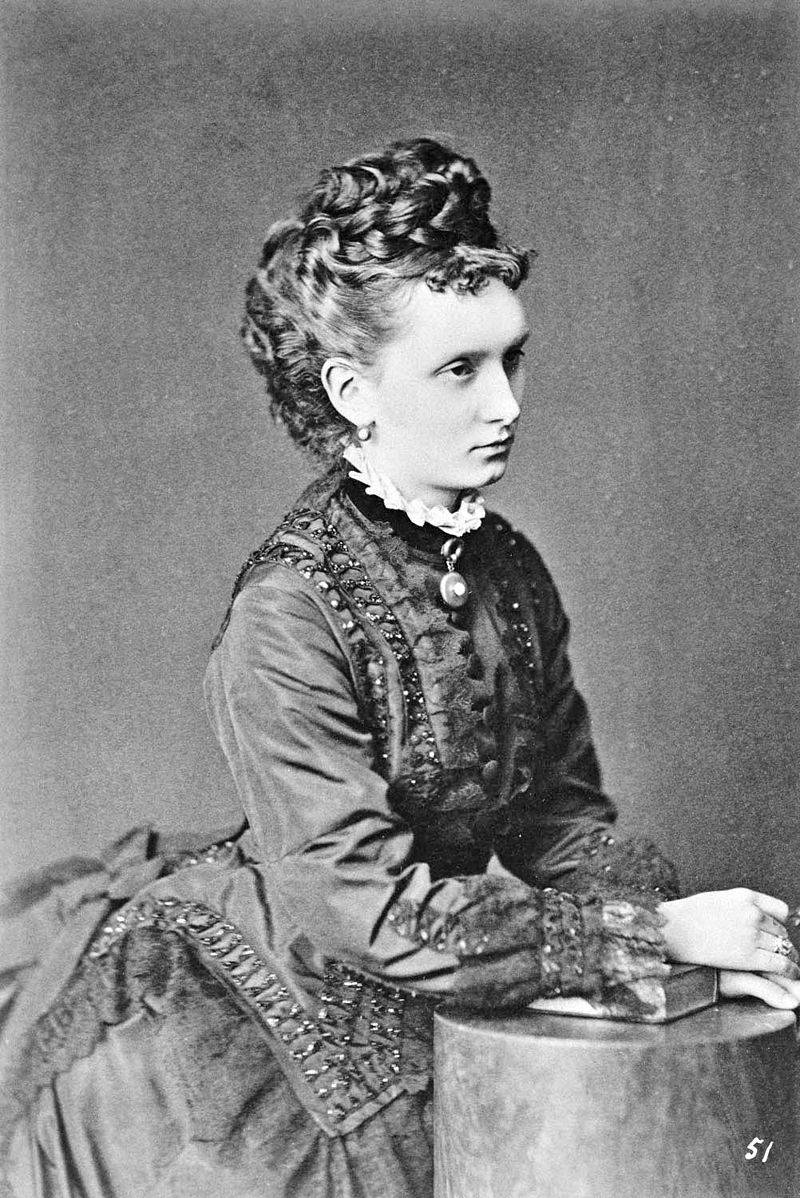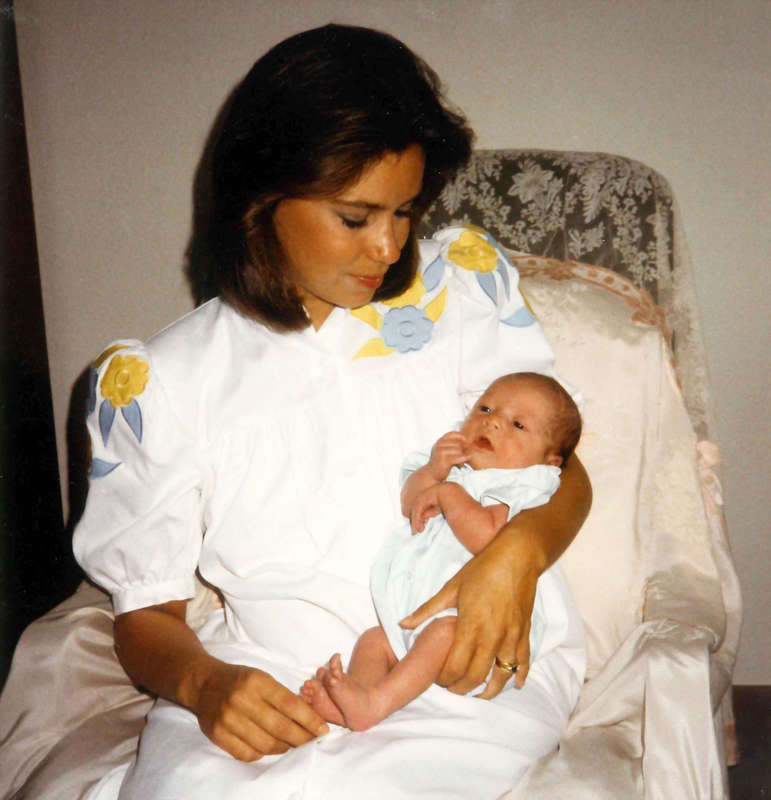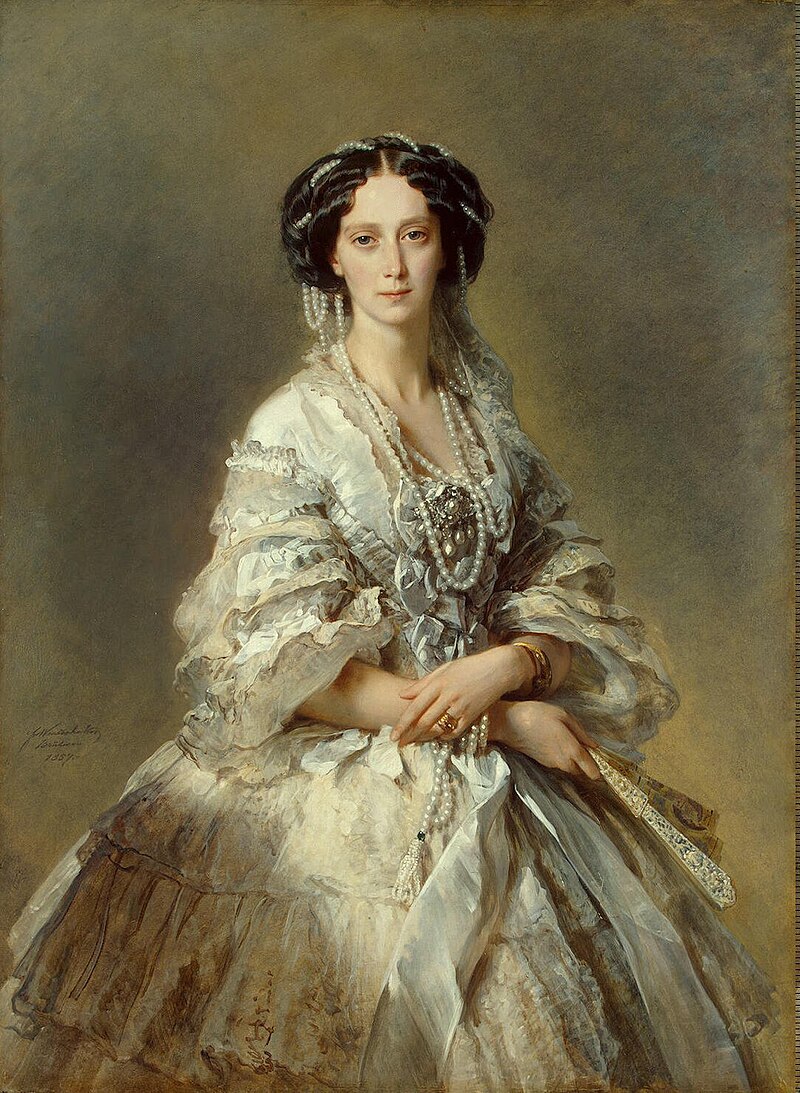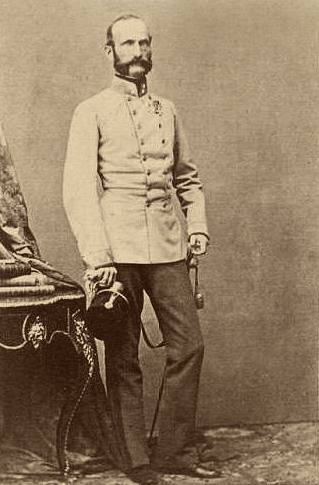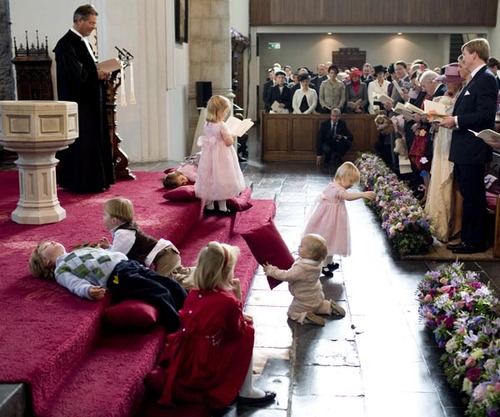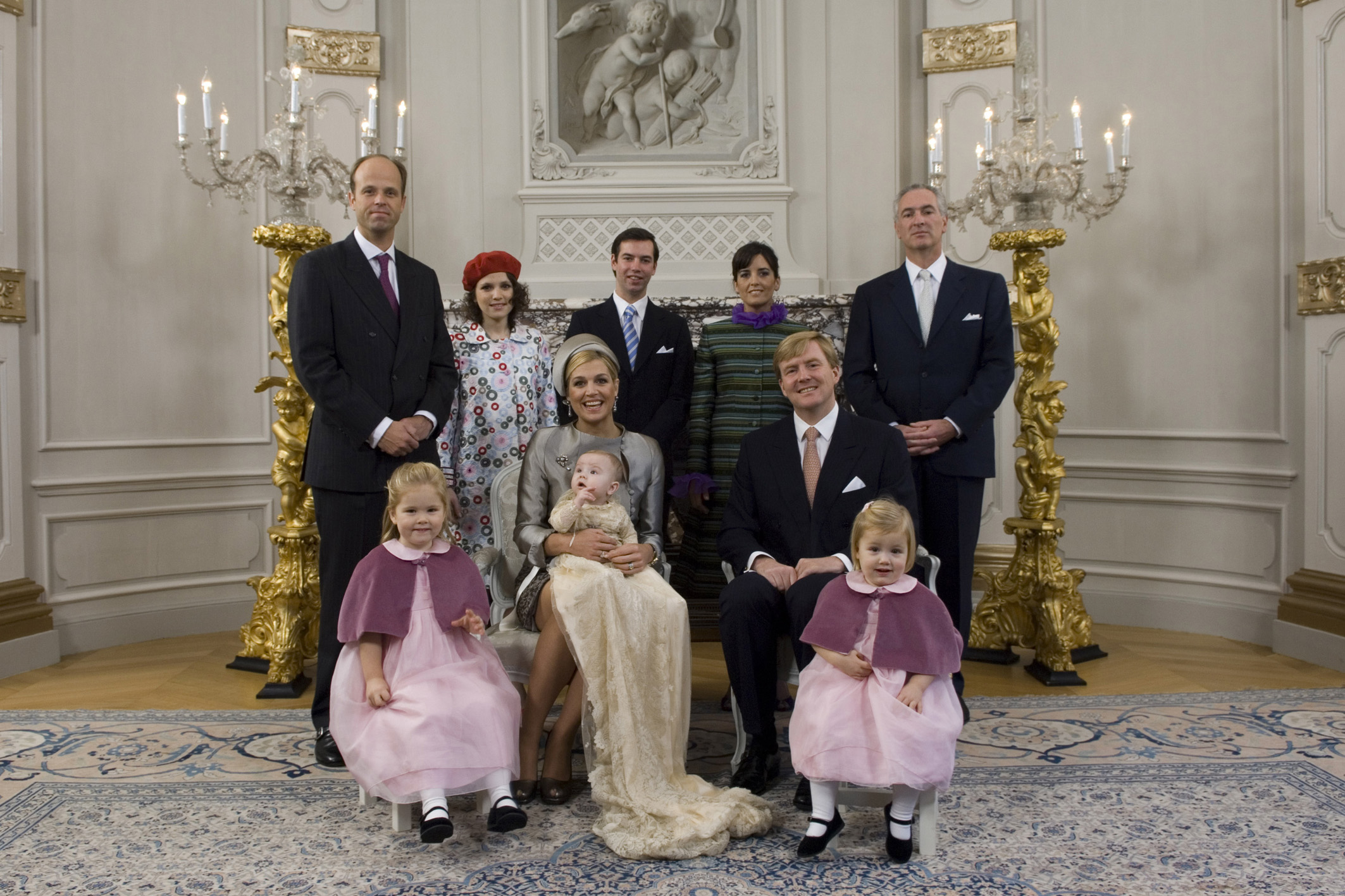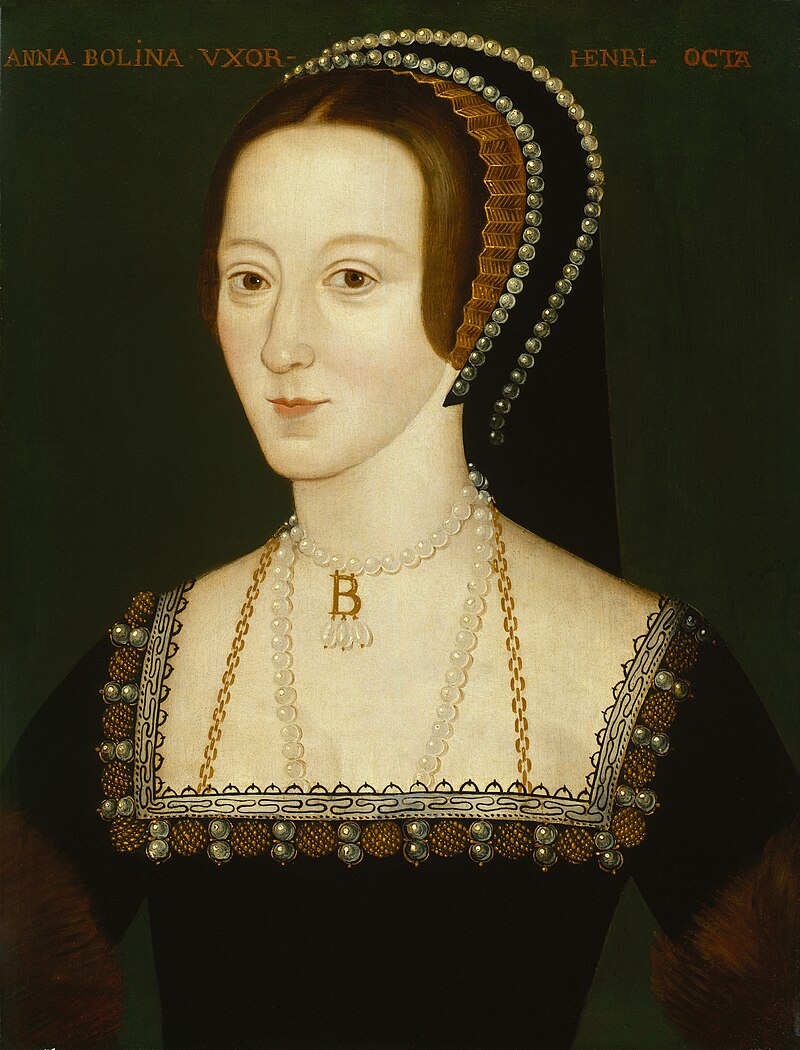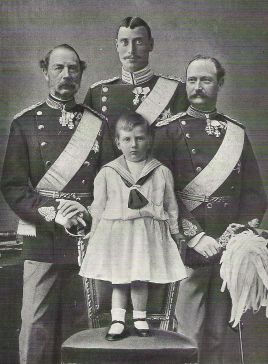by Susan Flantzer
© Unofficial Royalty 2019
The Royal Chapel located in the Royal Palace in Oslo, Norway is the site of many events of the Norwegian royal family, especially christenings and confirmations. After their deaths, King Haakon VII and King Olav V lay in state in the Royal Chapel
The members of the Norwegian royal family belong to the Church of Norway, an evangelical Lutheran denomination of Protestant Christianity. Until a constitutional amendment in 2012, the monarch was the supreme governor and protector of the Church of Norway. Since 2012, the Church of Norway has been self-governing but it remains the established state church.
The traditional Norwegian royal christening gown was handmade by Princess Ingeborg of Sweden (the mother of Crown Princess Märtha of Norway) and has been worn by most descendants of King Olav V and Crown Princess Märtha, who died before her husband became king. The names of all the babies who wear the gown are embroidered on the gown.
*********************
King Haakon VII of Norway, born Prince Carl of Denmark
- Unofficial Royalty: King Haakon VII of Norway
- Parents: King Frederik VIII of Denmark and Princess Louise of Sweden
- Born: August 3, 1872, at Charlottenlund Palace near Copenhagen, Denmark
- Christened: September 7, 1872, at Charlottenlund Palace near Copenhagen, Denmark
- Names: Christian Frederik Carl Georg Valdemar Axel (Prince of Denmark)
- Godparents:
*********************
Queen Maud of Norway, Princess Maud of Wales
Embed from Getty Images
Maud with her mother
- Unofficial Royalty: Princess Maud of Wales, Queen of Norway
- Parents: The Prince and Princess of Wales, later King Edward VII and Queen Alexandra (born Princess Alexandra of Denmark)
- Born: November 26, 1869, at Marlborough House in London, England
- Christened: December 24, 1869, at Marlborough House in London, England
- Names: Maud Charlotte Mary Victoria
- Godparents:
- Prince Leopold of the United Kingdom (her paternal uncle)
- Prince Friedrich Wilhelm of Hesse-Kassel (her maternal first cousin once removed)
- Count Gleichen (her paternal half-first cousin once removed, born Prince Victor of Hohenlohe-Langenburg)
- Duchess of Nassau (wife of the future Adolphe, Grand Duke of Luxembourg, born Adelheid-Marie of Anhalt-Dessau)
- King Carl XV of Sweden
- Marie, Princess of Leiningen (wife of her paternal half-first cousin once removed, born Marie of Baden)
- Maria Feodrovna, Tsarevna of Russia (her maternal aunt, the future Empress Maria Feodorovna of Russia, born Dagmar of Denmark)
- Crown Princess Louise of Denmark (her maternal aunt by marriage, wife of the future King Frederik VIII of Denmark, born Louise of Sweden)
- Duchess of Inverness (her great-great-aunt by marriage, born Cecilia Underwood, morganatic wife of Prince Augustus, Duke of Sussex, uncle of Queen Victoria)
*********************
King Olav V of Norway, born Prince Alexander of Denmark
- Unofficial Royalty: King Olav V of Norway
- Parents: King Haakon VII of Norway, born Prince Alexander of Denmark, and Princess Maud of Wales
- Born: July 2, 1903, at Appleton House on the Sandringham Estate in the United Kingdom
- Christened: August 11, 1903
- Names: Alexander Edward Christian Frederik
- Godparents:
*********************
Crown Princess Märtha of Norway, born Princess Märtha of Sweden
- Unofficial Royalty: Crown Princess Märtha of Norway
- Parents: Prince Carl of Sweden, Duke of Västergötland, and Princess Ingeborg of Denmark
- Born: March 28, 1901, at the Hereditary Prince’s Palace in Stockholm, Sweden
- Christened:
- Names: Märtha Sofia Lovisa Dagmar Thyra
- Godparents:
*********************
Princess Ragnhild, Mrs. Lorentzen
Embed from Getty Images
Princess Ragnhild with her parents
- Unofficial Royalty: Princess Ragnhild, Mrs. Lorentzen
- Parents: King Olav V of Norway and Princess Märtha of Sweden
- Born: June 9, 1930, at the Royal Palace in Oslo, Norway
- Christened: June 27, 1930, at the Royal Chapel of the Royal Palace in Oslo, Norway
- Names: Ragnhild Alexandra
- Godparents:
- King Haakon VII of Norway (her paternal grandfather)
- Queen Maud of Norway (her paternal grandmother, born Princess Maud of Wales)
- Prince Carl of Sweden (her maternal grandfather)
- Princess Ingeborg of Sweden (her maternal grandmother, born Ingeborg of Denmark)
- King Gustaf V of Sweden (her maternal great-uncle)
- Princess Victoria of the United Kingdom (her paternal great-aunt)
- Princess Axel of Denmark (her maternal aunt, born Margaretha of Sweden)
- Duke of York (her father’s maternal first cousin, later King George VI of the United Kingdom)
*********************
Princess Astrid, Mrs. Ferner
- Unofficial Royalty: Princess Astrid, Mrs. Ferner
- Parents: King Olav V of Norway and Princess Märtha of Sweden
- Born: February 12, 1932, at Villa Solbakken in Oslo, Norway
- Christened: March 31, 1932, at the Royal Chapel of the Royal Palace in Oslo, Norway
- Names: Astrid Maud Ingeborg
- Godparents:
- King Haakon VII of Norway (her paternal grandfather)
- Queen Maud of Norway (her paternal grandmother, born Princess Maud of Wales)
- Prince Carl of Sweden (her maternal grandfather)
- Princess Ingeborg of Sweden (her maternal grandmother, born Ingeborg of Denmark)
- Princess Astrid, Duchess of Brabant (her maternal aunt, later Queen Astrid of Belgium, born Astrid of Sweden)
- Duchess of York (wife of her father’s maternal first cousin, later Queen Elizabeth of the United Kingdom and The Queen Mother, born The Honorable Elizabeth Bowes-Lyon)
- Princess Thyra of Denmark (paternal great-aunt)
- Prince Eugen of Sweden (maternal great-uncle)
- Prince George of the United Kingdom (her father’s maternal first cousin, later the Duke of Kent)
*********************
King Harald V of Norway

Harald with his mother; Credit – Wikipedia
- Unofficial Royalty: King Harald V of Norway
- Parents: King Olav V of Norway and Princess Märtha of Sweden
- Born: February 21, 1937, at the Skaugum Estate in Asker, Norway.
- Christened: March 31, 1937, at the Royal Chapel of the Royal Palace in Oslo
- Names: Harald
- Godparents:
- King Haakon VII of Norway (his paternal grandfather)
- Queen Maud of Norway (his paternal grandmother)
- Prince Carl of Sweden (his maternal grandfather)
- Princess Ingeborg of Sweden (his maternal grandmother)
- King Leopold III of Belgium (his maternal uncle by marriage)
- Queen Mary of the United Kingdom (his paternal great-aunt by marriage)
- King George VI of the United Kingdom (his paternal first cousin once removed)
- Crown Princess Ingrid of Denmark (later Queen Ingrid of Denmark, his maternal second cousin)
*********************
Princess Märtha Louise of Norway
Embed from Getty Images
Märtha Louise with her parents
- Unofficial Royalty: Princess Märtha Louise of Norway
- Parents: King Harald V of Norway and Sonja Haraldsen
- Born: September 22, 1971, at the Rikshospitalet in Oslo, Norway
- Christened: October 19, 1971, at the Royal Chapel of the Royal Palace in Oslo
- Names: Märtha Louise
- Godparents:
- King Olav V of Norway (her paternal grandfather)
- Princess Axel of Denmark (her maternal great-aunt, born Margaretha of Sweden)
- Count Fleming of Rosenborg (her father’s maternal first cousin)
- Princess Ragnhild of Norway (her paternal aunt)
- Dagny Haraldsen (her maternal grandmother)
- Haakon Haraldsen (her maternal uncle)
- Nils Jørgen Astrup (her father’s friend, businessman and ship owner)
- Ilmi Riddervold (her mother’s friend, her mother’s maid of honor)
*********************
Crown Prince Haakon of Norway
- Unofficial Royalty: Crown Prince Haakon of Norway
- Parents:
- Born: July 20, 1973, at the Rikshospitalet in Oslo, Norway
- Christened: September 20, 1973, in the Royal Chapel at the Royal Palace in Oslo, Norway
- Names: Haakon Magnus
- Godparents: the three Scandinavian monarchs
- King Olav V of Norway (his paternal grandfather)
- King Carl XVI Gustaf of Sweden (his paternal third cousin)
- Queen Margrethe II of Denmark (his father’s paternal second cousin)
*********************
Princess Ingrid Alexandra of Norway

Credit – http://www.royalcourt.no
- Unofficial Royalty: Princess Ingrid Alexandra of Norway
- Parents: Crown Prince Haakon of Norway and Crown Princess Mette-Marit, born Mette-Marit Tjessem Høiby
- Born: January 21, 2004, at the Rikshospitalet in Oslo, Norway
- Christened: April 17, 2004, in the Royal Chapel at the Royal Palace in Oslo, Norway
- Names: Ingrid Alexandra
- Godparents:
- King Harald V of Norway (her paternal grandfather)
- Princess Märtha Louise of Norway (her paternal aunt)
- King Frederik X of Denmark (then The Crown Prince of Denmark, her father’s paternal third cousin)
- Crown Princess Victoria of Sweden
- King Felipe VI of Spain (then The Prince of Asturias, her father’s paternal fourth cousin)
- Marit Tjessem (her maternal grandmother)
*********************
Prince Sverre Magnus of Norway

Credit – http://www.royalcourt.no, photographer: Tor Richardsen / Scanpix
- Unofficial Royalty: Prince Sverre Magnus of Norway
- Parents:
- Born: December 3, 2005, at the Rikshospitalet in Oslo, Norway
- Christened: March 6, 2006, at the Royal Chapel in the Royal Palace in Oslo, Norway
- Names: Sverre Magnus
- Godparents:
- Queen Sonja of Norway (his paternal grandmother)
- Queen Máxima of the Netherlands (then Princess Máxima, born Máxima Zorreguieta Cerruti)
- Crown Prince Pavlos of Greece
- Princess Rosario of Bulgaria (wife of Prince Kyril of Bulgaria, born María del Rosario Nadal y Fuster de Puigdorfila)
- Espen Høiby (his maternal uncle)
- Bjørn Steinsland (his father’s friend)
- Marianne Gjellestad (his mother’s friend)
*********************
This article is the intellectual property of Unofficial Royalty and is NOT TO BE COPIED, EDITED, OR POSTED IN ANY FORM ON ANOTHER WEBSITE under any circumstances. It is permissible to use a link that directs to Unofficial Royalty.


